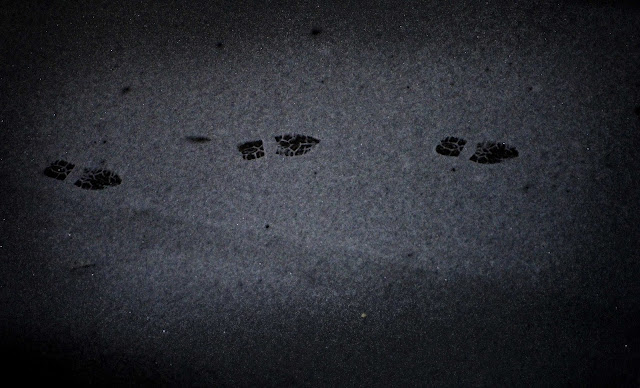Appello della giornalista Edith Bouvier ferita a Homs. Va aiutata con urgenza.
Aggiornamento 24.2.2012, ore 23.48 (Svizzera): per aggiornamenti sulla situazione rinvio al mio account Twitter (@gianlucaweast o @weastnews).
Aggiornamento 2.3.2012: Edith è stata rimpatriata in Francia.
Raccontare
giovedì 23 febbraio 2012
mercoledì 22 febbraio 2012
Altri addii.
Marie Colvin, Remi Ochlik, Rami al-Sayed. Giornalisti e citizen-journalist. Uccisi a Homs. Insieme a decine di altri civili.
venerdì 17 febbraio 2012
Anthony Shadid 1968 - 2012
In memoria di un giornalista vero, Anthony Shadid del New York Times. Su di lui e di lui QUI. Lo ricorderò' domani nel Senso del taccuino, su La Regione.
sabato 4 febbraio 2012
Not just numbers.
 |
| (c) 2012 weast |
More than 3,000 civilians were killed in Afghanistan during 2011, the deadliest year on record for residents of the war-torn country, according to a UN report.
A total of 3,021 civilians died last year, up eight per cent from 2,790, the UN mission in Afghanistan (UNAMA) said on Saturday in its annual report. The toll marked the fifth year in a row that the number of civilian deaths had increased.
Roadside bombs and increasingly deadly suicide attacks targeting civilians killed more people than any other type of attack, it said.
"Afghan children, women and men continue to be killed in this war in ever-increasing numbers," Jan Kubis, the UN special representative to Afghanistan, said on Saturday.
"For much too long Afghan civilians have paid the highest price of war. Parties to the conflict must greatly increase their efforts to protect civilians to prevent yet another increase in civilian deaths and injuries in 2012."
"For much too long Afghan civilians have paid the highest price of war. Parties to the conflict must greatly increase their efforts to protect civilians to prevent yet another increase in civilian deaths and injuries in 2012."
Single largest killer
In a statement accompanying the report, UNAMA said "the tactics of choice of anti-government elements subjected Afghan civilians to death and injury with increasingly lethal results in 2011".
"Improvised explosive devices (IEDs) were the single largest killer of Afghan children, women and men in 2011," it added.
"Improvised explosive devices (IEDs) were the single largest killer of Afghan children, women and men in 2011," it added.
Bombs, including roadside mines detonated by people stepping on them or vehicles driving over them, accounted for 967 deaths, UNAMA said, the biggest single killer of civilians.
Al Jazeera's Jennifer Glasse, reporting from Kabul, the Afghan capital, said the UN attributes 77 per cent of the civilian casualties to what it calls "anti-government forces".
"It says the big problems there are improvised explosive devices that are set off by vehicles or people stepping on pressure plates," she said.
"Also suicide bombings in very crowded places - [those] are the main attributes for the jump in the number of civilian deaths."
NATO air attacks
The report said forces fighting the government of Afghan President Hamid Karzai and its allies in the NATO-led International Security Assistance Force (ISAF) killed 2,332 civilians in 2011, 14 per cent more than in 2010.
Security forces battling anti-government fighters killed 410 civilians, down four per cent from the previous year, it said.
Security forces battling anti-government fighters killed 410 civilians, down four per cent from the previous year, it said.
Most deaths attributed to NATO forces were a result of attacks from the air.
The UN mission urged the 130,000-strong NATO force to review its tactics aimed at preventing civilian loss of life in all military operations - "in particular aerial attacks".
It also called for stronger efforts to prevent civilian casualties in the night raids, which have been widely condemned, including by Karzai.
It also called for stronger efforts to prevent civilian casualties in the night raids, which have been widely condemned, including by Karzai.
 |
| (c) 2012 weast |
A total of 11,864 civilians have died in the conflict in Afghanistan since 2007, the report said.(Source: Aljazeera and Agencies)
venerdì 3 febbraio 2012
Il senso del taccuino.
| (c) 2012 weast productions. Mohammed |
giovedì 2 febbraio 2012
Amiche.
 |
| (c) 2012 weast |
"Tu sai come la penso io, quello che voglio e quello che no... Io con uno così' mai, guarda, mai e poi mai... E' uno che... no, guarda, nemmeno a parlarne... Io a lei gliel'ho anche detto. Le ho detto: guarda che quello... cioè, uno così?, un uomo così'... Ma come fai? Devi proprio volerti male, hai scritto in fronte io mi butto via... Ma allora dillo che vuoi buttarti via, insomma... E' quel genere di uomo che... sai com'è.... sai dove vai a finire... sai cosa trovi.... Lei neanche mi ascolta. Partita, a testa bassa. Persa da piangere... Pero' lui è bello. Certo che per bello è bello... Sono giù in tre. Due proprio neanche li guardi. Lui invece... quello che dici un uomo, un tipo... Sono in tre, lui è quello che spicca. Sai, fa anche pesi, non soltanto palestra leggera. Fa pesi. E lo vedi. Hai voglia se si vede. Quando entri al fitness center, lui spicca da dio. E' sempre alla cassa. Io alla (biiip) gliel'ho detto: ma lascia stare! Due sono brutti, guarda, brutti veri. L'altro invece... lui.... Ti saluto, cara: ho palestra fra mezz'ora."
Monologo, fedelmente trascritto, di una giovane donna che camminava con un'amica. Parlavano, mi pare di capire, di un'altra amica. Io stavo sorpassando, con la spesa, e ho rallentato. Per nulla al mondo mi sarei perso questo straordinario capolavoro.
mercoledì 1 febbraio 2012
Iscriviti a:
Post (Atom)

